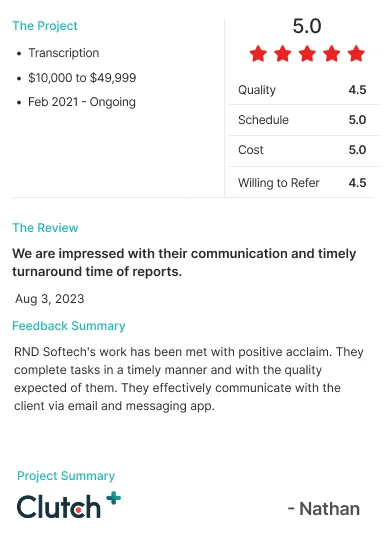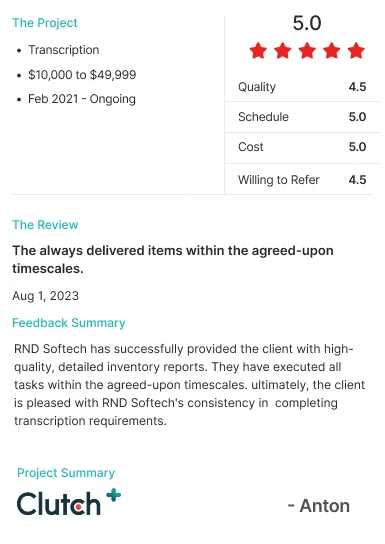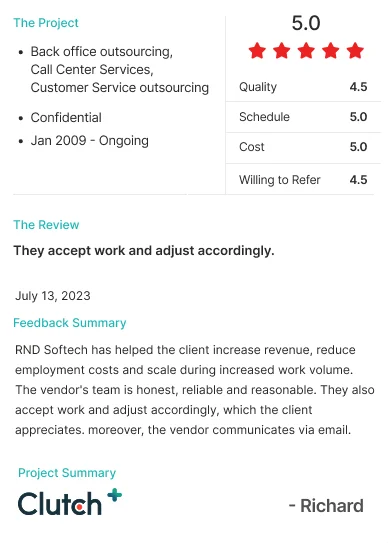-
Property management is a complex task, often involving a multitude of challenges.
One such challenge is the meticulous documentation handling and the constant need to
ensure accuracy and timeliness. In this context, a clear and precise inventory
transcription emerges as a crucial tool for property managers, asset management
companies and Inventory clerks of the UK and Australia. But what exactly does this
back-office task entail, and why is it so vital?
-
What is property inventory transcription?
Property inventory transcription is a process that involves documenting the condition and
contents of a property. This goes beyond a simple checklist. Transcription provides a
detailed, textual record of every aspect of the property, capturing the current state of
fixtures, furniture, and appliances.
How inventory transcription differs from regular inventory checks?
Unlike regular inventory checks that provide a snapshot of a property,s items, transcription
offers a comprehensive report. It's akin to a glance and a detailed description. Inventory
transcription includes notes, photos, and even video references to accurately document every
item and detail.
Key benefits of property inventory transcription
Reduces errors and omissions
Transcription helps ensure every detail is noticed. Missing items, damages, or maintenance
needs can be identified clearly, helping avoid costly mistakes or disputes.
Saves time and increases efficiency
Property managers can refer to records rather than redo inspections when everything is
documented and in order. This translates to faster responses to tenant inquiries and a
smoother management process.
Enhances tenant and landlord trust
Precise and accurate documentation fosters trust. Tenants feel more secure knowing the
property is well-documented, and landlords have peace of mind knowing their investment is
adequately recorded and protected.
The importance of accurate property inventory transcription
Legal protection for property managers
One of the biggest challenges in property management is dealing with disputes, especially
those that arise at the end of a tenancy. Accurate inventory transcription provides legal
backing for property managers. These records can serve as crucial evidence in case of
disagreements over damages or missing items.
Inventory of items in the rental property
If the property comes with furniture, appliances or other items, it's vital to document their
condition. Record details about each item, including any wear and tear that is already
present.
Photographic evidence
Taking photos of the property is a crucial step. Photos serve as visual evidence to support
the written descriptions in the report. Ensure that these photos are clear, dated and
comprehensive.
Utility meter readings
To avoid future disputes regarding utility bills, it's a good idea to record the readings of
water, electricity and gas meters at the time of check-in.
Tenant signatures and agreement
Both the landlord and tenant should sign the report, confirming that they agree with the
documented condition of the property. This signature acts as an agreement that the property
is in the stated condition at the beginning of the lease.
Legal benefits of a detailed check-in report
A check-in report isn't just useful for preventing misunderstandings; it also serves as legal
proof if a dispute arises. It can protect both parties' rights and prevent financial
conflicts over the return of security deposits.
Serving as legal proof in case of disputes
In the event of a disagreement, such as a claim for damage that the tenant disputes, the
check-in report can serve as evidence. It's a legally binding document that outlines the
property's condition at the time of move-in.
Protecting both landlords and tenants' rights
A well-documented check-in report ensures that the tenant is not held responsible for
pre-existing damage. For landlords, it provides the assurance that they can charge for
damage that occurred during the tenancy, without facing unjust claims from the tenant.
Avoiding financial disagreements
With a clear check-in report, both parties are less likely to engage in disputes over the
return of security deposits. It clearly identifies what damage, if any, existed when the
tenant moved in.
Both landlords and tenants should follow best practices to ensure the check-in process is
thorough and transparent.
A check-in report isn't just useful for preventing misunderstandings; it also serves as legal
proof if a dispute arises. It can protect both parties' rights and prevent financial
conflicts over the return of security deposits.
Conducting a thorough inspection
Before moving in, both parties should carefully walk through the property and inspect every
room. It's important to do this together to ensure that nothing is overlooked.
Communication between parties
Good communication is key to a smooth check-in process. Both parties should discuss any
concerns or questions about the condition of the property before signing the report.
Keeping records organized
Both landlords and tenants should keep copies of the check-in report and all related
documents in an organized manner. This will make it easier to refer back to the report if
any disputes arise in the future.










